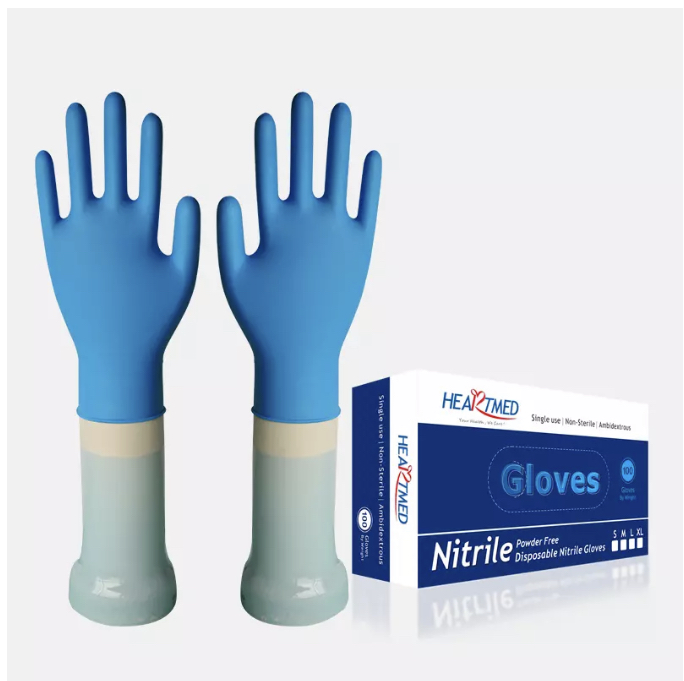The level of protection you’ll get from disposable gloves depends on factors beyond the material type. Factors including thickness, durability, size, and fit must also be taken into consideration. Keep the following factors in mind when choosing the best disposable gloves for you.
Intended Use
How you intended to use disposable gloves affects the choice in material, and to a lesser extent, the durability and thickness of the gloves. When shopping for single-use gloves, you may want to purchase different types for specific tasks around the house, such as Nitrile Gloves for cleaning the bathroom, and vinyl ones for preparing food.
Consider whether the tasks you plan to wear them for carry a risk of coming in contact with harmful microorganisms, in which case you should go with latex or nitrile gloves. On the other hand, if keeping your hands clean from dirt, grime, or other low-risk substances is your primary concern, vinyl and poly gloves should suffice.
Durability & Thickness
Disposable gloves come in a range of thicknesses measured in mils. A mil is one-thousandth of an inch of thickness, or gauge. Most disposable gloves for household use have a gauge of between 2 and 8 mils. Thinner gauge gloves—between 2 and 4 mils—allow better dexterity and flexibility, but are not as durable. Thicker gloves—6 mils and up—are not as flexible, but offer more protection.
Size
Gloves that don’t fit properly are less comfortable and will have a tougher time protecting your hands. A properly fitted glove will have gripping power and reduce hand fatigue. Materials like latex and nitrile offer more flexibility in hand movement than vinyl or poly gloves.

Most disposable glove sizes range from extra small to extra large. Measure your hand to make sure you buy the right size. Wrap a tape measure around your palm at its widest point and take your measurement in inches. This will give you an estimate of the size you need.
Powder-Free vs. Powdered
Some disposable latex, nitrile, and vinyl gloves have cornstarch powder added, which makes them easier to put on and prevents gloves from sticking together and to your skin. They’re referred to as powdered gloves and are specified as such in their packaging.
Powder-free gloves can be harder to remove, and it can be difficult to get a firm grip on a small item in a powder-free glove. In general, powder-free gloves are more expensive than powdered ones. Powder-free options usually come with better resistance to chemicals, water, and oil as well.
Skin Sensitivity
Since Disposable Exam Gloves usually fit snugly against your skin, they can cause skin irritation or allergic reactions. Latex gloves are more likely to cause irritation than other materials because some people are allergic to latex. Nitrile, vinyl, poly, and neoprene are less likely to cause allergic reactions or skin irritation.
Powdered gloves may also cause irritation, but there are plenty of non-powdered disposable gloves available. If you have sensitive skin, stick with non-powder disposable gloves in nitrile and vinyl.
Our Top Picks
Disposable gloves are rated for industrial, medical, or food usage, so select the gloves based on the household task you intend to use them for. These recommendations reflect some of the best disposable gloves available in their respective categories.